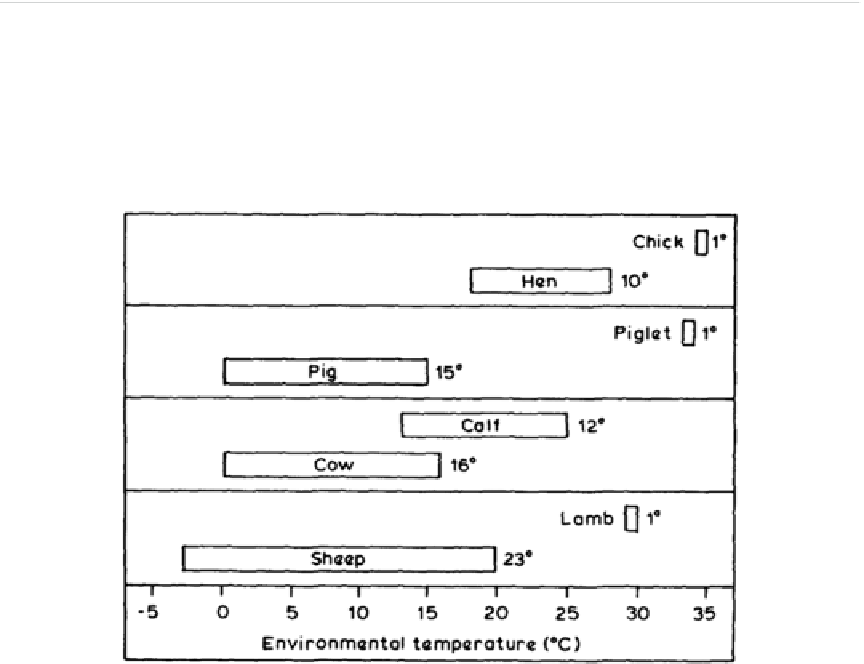Agriculture Reference
In-Depth Information
Table 4.9
High temperature and soil moisture effects on major fi eld crops in the US
Crop
Effects
Corn Temperature higher than 36 °C causes pollen to lose viability
Extremely sensitive to soil moisture defi cits. Four days of visible wilting in (a) the period before tasseling
reduces yield by 10-25 %, (b) between the week before tasseling and the milk stage reduces yield by more
than 50 %, in (c) the soft dough stage, decreases yield by 40 %
Afl atoxin concentration rises when the crop has a water defi cit
Very intolerant to fl ooding except after the silking stage; the effect of fl ooding depends on temperature.
Before the 6th leaf stage the crop does not survive more than 4 days of fl ooding if the temperature is less
than 25 °C and less than 24 h if the temperature is more than 25 °C. When the crop is less than 15 cm high,
24 h of fl ooding reduces yield by 18 % at any temperature
Continuous soil saturation causes long-term problems related to rot development and increased damage by
diseases (e.g., crazy top and common smut)
Soybean Soil temperature higher than 35 °C at planting causes seedling death. Very sensitive to temperatures above
35 °C during the fi rst 3 weeks after bloom. Great ability to recover from temperature stress at other times
Sensitive to soil moisture defi cits and drought at planting and from bloom to pod-fi ll. Very sensitive to soil
moisture defi cits during pod-fi lling and seed enlargement
Relatively tolerant to excess soil humidity, but saturated soils increase the risk of seedling diseases
especially at temperatures above 32 °C
Wheat
Temperature above 30 °C for more than 8 h can reverse vernalization
Flowering, pollination, and grain fi lling sensitive to water stress
Excess soil moisture causes water logging and increases risk of fungal infestations
Cotton
Temperature above 40 °C for more than 6 h causes bolls to abort
Relatively tolerant to temperatures under 40 °C
Sensitive to soil moisture defi cits and drought at planting and fl owering
Excess rainfall at maturity damages quality of crop
Fig. 4.8
Temperature zones in which farm animals perform effectively. Numbers alongside
boxes
indicate temperature
range (Bianca
1976
)
than adults (Fig.
4.8
). A rise in summer tempera-
tures, especially in regions with a continental cli-
mate characterized today by summer temperatures
near the threshold tolerated by livestock (such as the
South Central USA and USSR), could be detrimen-
tal to production (Squire and Unsworth
1988
).


















Search WWH ::

Custom Search